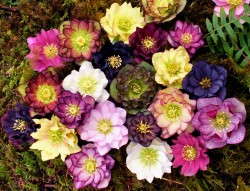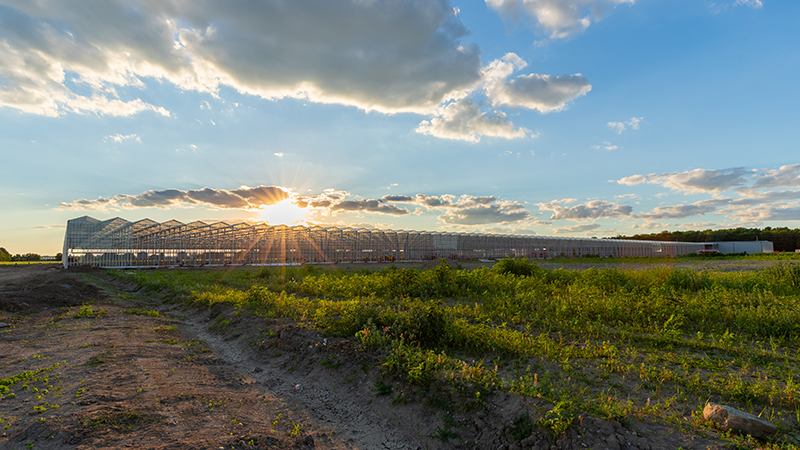Growing Hellebores In The Greenhouse

Hellebores might be the perfect perennial. What other plant has lustrous, handsome foliage and sumptuous flowers in an array of shapes and colors? What other plant tolerates dry as well as wet soils, has few pests and is deer-resistant?
These plants are the first to greet the garden center customer in early spring. The cheerful flowers are a perfect complement to spring bulbs with foliage that persists until winter and acts as a foil for annuals and perennials in the summer. Tolerant of severe winters and hot, humid summers, hellebores fill an important niche in the landscape-plant market. They can handle sun as well as shade. In other words, they rock!
Grower Tips
Planting: Plant one 30-cell liner per 6-inch or gallon pot in well-drained media. Make sure not to cover the crown by planting too deeply. This is the most common failure. The soil level of the pot and liner should match evenly.
A preventative fungicide at potting can be beneficial. A tank mix of mefenoxam and thiophanate-methyl or any other broad-spectrum fungicide will do. Be sure to read the label for desired rates and application intervals. As with any chemical, test on a small group of plants before applying to the entire crop.
pH/EC: Maintain a pH of 5.5 to 6.5 and an EC of 1.0 to 1.5 via the
pour-through method.
Temperature: Hellebores do well with night-time temperature of 40°F to 45°F and 60°F to 65°F during the day. Much root growth occurs during cooler periods. Plants prefer a cooler location in a greenhouse. Bench temperatures are usually 10-plus degrees higher than the ground.
Light: Provide 2,000 to 3,000 foot-candles of light. Use shade cloth between 50 percent and 70 percent depending on location during the summer.
PGRs: Configure can help to promote basal branching and can be used when bulking the plant. It can sometimes cause distorted growth on the leaf that was emerging at the time of application, but the plant will quickly grow out of it. It is generally better to use lower rates and apply more frequently as opposed to higher rates with a single application.
Fertilizer/Watering: Supply a low to medium rate of constant liquid feed at 100 to 150 ppm of 20-10-20. Allow the plants to dry slightly between irrigations, but keep plants moist throughout production.
Pests/Disease: Aphids and thrips are the main pests of hellebores. Pythium and Phytophthora can be problems if the plants stay waterlogged for prolonged amounts of time. Fungal leaf spotting can be an issue if the foliage remains wet for prolonged periods of time. Remove the previous year’s foliage either before new growth begins or as new leaves emerge. The O’Byrnes recommend a mixture of pyrethrins and canola oil sold by Gardens Alive called Pyola Oil that is very effective and is acceptable to organic growers.
Scheduling: The finish time from a 30-cell liner to a 6-inch pot is 10 to 12 weeks. It takes 16 to 18 weeks to finish from a 30-cell liner to a 1-gallon pot. Dormancy is required for flowering.










